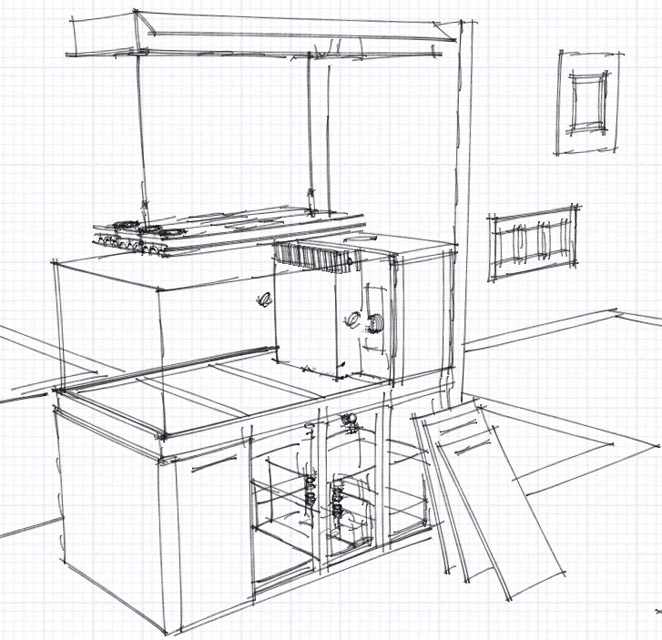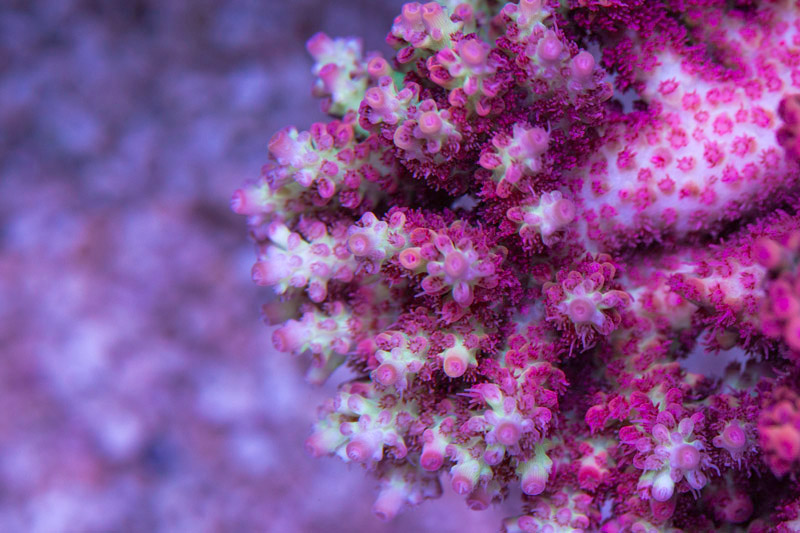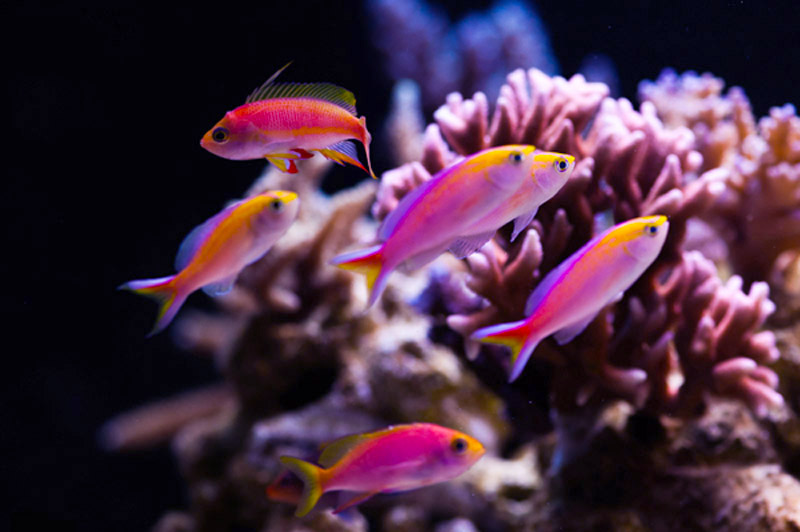 April 2016 Tank of the Month
April 2016 Tank of the Month
April 2016 Tank of the Month
Joseph Chi's (shih87) 190 US-gallon Reef Aquarium
 |
Introduction
It is a great honor and I humbly aware that my tank has been selected as RC TOTM, a recognition that I could never dream on.
My name is Joseph Chi, born, raised, and currently living in Taiwan. However, I have spent many good years in California and Washington to attend graduate school, build my family, and work. I regularly study Reef Keeping Magazine TOTM tanks and many outstanding tanks in the Reef Central forum. Saying that, I would like to thank the Reef Central community for inspiring me in reefing and keeping me updated of world-class aquariums and hobbyists. I would also like to thank Reef Keeping Magazine for giving me the opportunity to share my tank and introduce how a common reef tank is run in Taiwan.
 |
Background
Although I was chairman of my fishing club and had a few freshwater tanks back in college, my first saltwater tank was established in 2005. It was an ELOS 70 (53 gallon) brought from a California LFS. I was not successful on SPS and didn’t understand how SPS was different from artificial coral, but the ELOS tank gave me the idea of a tank with a clean look and compact design. Fish and giant hermit crab were my favorite during that period of time. Two years later after learning from Reef Central and LFS, I started to get the concept of “a system” (Berlin, Deep Sand Bed, Carbon Source, etc...). I then upgraded my tank to 120 gallons with a canopy, and used a DA ReefKeeper Elite Controller to monitor my tank. I could keep the SPS alive now, but still never saw the color I expected. I did find some sort of success breeding clownfish and RBTA with this tank. A small fire in 2008 brought the tank down, but it was a good lesson learned, and product quality, automation, and alarm system designs become top priorities to me. My first tank in Taiwan was built in late 2010. It was a SPS dominated 120 gallon tank with HQI & T5. After a year of running it, I finally realized how important currents, turbulence, and rock stable water parameters were. Knowing this, I made some changes accordingly and my coral started growing like crazy. This tank ended in November 2014 when the moving date to my new house approached, and most coral colonies were transferred to friend’s tank and LFS.
When I started to plan my new tank, what I really wanted to do is re-build an old image of when I went diving as a youth, so the “Bring the Reef Home” BTRH idea come out. To me, to meet BTRH, an aquarium had to be open-top with a white sand bed, coral, and fishes, but it was much more than just that. To achieve BTRH, the entire system and tank had to be neat, meaning less pumps and power cords in the display tank; it had to be safe, easy to maintain, and quiet, meaning Bean Animal overflow, only using quality products, and even needing some innovation. Starting from September 2013, it took me over one year of sketching, discussing with friends, selecting necessary equipment, and purchasing items overseas. When the first time water was in tank it was already January 2nd, 2015. My thread in the Taiwan reef forum has almost 1000 replies just in the planning phase. Some folks started calling me a control freak when I showed them my blueprint with an electric winch for the ATI light, Apex controller, 16 heads dose system, IP Cams, and even an alkalinity monitor system.
System Profile
• Display: 190 US-gallon rimless 132cm x 90 x 60)
• Stand: Custom made by house carpenter under LFS supervision
• Sump: 90 US-gallon sump (155cm x 50 x 45)
• Skimmer: Royal Exclusiv Doube Cone 250
• Wave Maker: Tunze 6105 x2 & 6095 x2 controlled by Apex
• Auto-Topoff: Tunze ATO system
• Lighting: ATI Hybrid (T5 54W x8 & LED 75W x3) & Kessil AP700 x2; electric winch for 100kg load
• System Control/Automation: Neptune Systems Apex Controller
• Zeovit Reactors: JNS Zeovit 2L reactor
• Dosing: GHL 1st Gen x3 (12 heads) & DIY step motor (4 heads)
• Additives: kH, Ca, Mg, K+, & KZ additives (Bak, Start3, AA, Food7, PIF, B-Balance, Xtra, Coral Snow, and CV)
• KH Monitor: KHG lab3 automated alkalinity monitoring device
 |
Current 'Smart' System
Due to my job and family, I often traveled one to three weeks around the world, and frequently visited my parents place over the weekend. As a result, I knew I had to add some new element into my aquarium system equation. I have to say making reefing hobby go “smart” seemed easier than other hobbies, as we have aquarium controllers like Neptune, GHL, and Digital Aquatics, which all have relatively mature solutions with positive user feedbacks. I first used Digital Aquatics ReefKeeper Elite, but recently swapped to Neptune Apex since it has a better product roadmap and more support/partnership with LED and pump makers. However, I still considered Apex alone did not fill all the gaps to reach smart aquarium, so I came out a list as below
1. Apex for central control and remote access
2. KZ balling for precise water parameters and less water change needs
3. Alkalinity monitor beyond the temperature, PH, ORP, salinity, and amp readings provided by Apex already
4. GHL and Apex DoS dosing pumps for KZ balling and Alk/Ca
5. IPCam as 2nd level of confidence after Apex readings
6. Failure recovery and power backup
In fact, since Apex is so critical, I have a backup Apex set standby for replacement if parts fail. I used a Tunze safety connector with 12v-20a Lead-acid battery to keep one Tunze pump from runing out of battery during a power outage. Four IP camera sets are dedicated for the main tank (2 sets) and sump (2 sets). However, when out of town, two more cameras are added for the tank and home security. About two years ago, I stopped waiting for a commercial all-in-one water parameter monitor system and turned to a single function, DIY alk monitoring device designed and patented by one of my friends in Taiwan, that’s one step further help me closer to my “smart aquarium” dream.
 |
Technical Specifications
My new tank is 132 cm (4.3’) x 90 (3’) x 60 (2’), rimless with 12mm thick glass, and designed for a three-sided view. Some key designs in my mind are as below...
- Apex controller with both 220v and 110v energy bar
- Light system is hanged by electric winch for easy access
- Sump is 9 inches longer than display tank for leaking protection
- Stand is divided to dry side and wet side
- Bean Anmial’s dead silent overflow
- Tunze Safety Connector for power outage
- DIY alkalinity device for KH monitoring
Lights
I simply believed I don’t need all theories and research many light manufactures and brands, but follow successful tanks for light system. Hence, I chose an ATI Hybrid to start with. It is equipped with a T5 54W x 8 and LED 75W x 3. ATI provides great spectrum combination for my coral at the central area, but due to my 90 cm wide tank size and aquascaping, I quickly found coral growing to the two sides started getting less light coverage. For that, I added the Kessil AP700 on each side. It took me a while, and I struggled for a bit on how to integrate ATI and Kessil together without adding extra wires. Now, I am very happy with my new design.
 |
Water Circulation
Dual return pump design to prevent a complete system shutdown when one pump fails. I’m using two Red Dragon 80W RD3 main pumps, but I only turn 50% of their power on in order to keep my close-loop water circulation around 6 cycles per hour. Instead, four Tunze pumps (6105 x 2 + 6095 x 2) are used to create enough currents and turbulence in the display tank. The concept behind this is that I like to keep food in the display tank long enough so that rather than flowing via overflow, down to sump and removed by filter foam and skimmer. I used to use a Tunze 7096 to program my pumps, but swapped to Apex eight months ago for better remote control when needed.
Filtration
The tank started with a KZ 14 days initial cycle. Less than one inch thick coral sand aragonite with about 40 lbs dead rock. To make sure KZ 14 days initial cycle completed within 14 days, I temporarily added crushed fresh live rock which had been carefully removed of unwanted hitchhikers. KZ carbon method, protein skimmer, carbon reactor, and KZ Zeovit reactor are the main daily filtration systems. The protein skimmer and filter foam mat are used as mechanical filtration. A carbon reactor is used when feel is needed, but neither GFO nor bio-pellets reactors were used. A refugium section is set in the sump with chaetomorpha algae and a Tunze 6095 for its standalone circulation.
|
Water Parameters:
|
Additives
Additives are dosed either by dosing pumps or manually.
For auto dosing, dosing solutions are either diluted by RO/DI, distilled water, or just original solutions, depend on the volume needs per dosing. KH, Ca, Mg, K+ solutions are made by baking soda, CaCl2, MgCl2, and KCl, respectively. KZ products such as Start3, PIF, B-Balance, and Xtra are also dosed automatically.
Coral Vitalizer, Bak, Food7, Amino Acid, and Coral Snow are dosed manually. Unlike the last tank, I haven’t started using Coral Booster and FlatwormStop.
Livestock
Fish
Yellow Triangle x1
Blue Tang x1
Algae Blenny x1
Six-line Wrase x1
Amphiprion Ocellaris Clownfish pair
Mandarin goby x2
Sunset Anthias x4
Blue green chromis x25
SPS
Acropora echinata x2
Acropora muricata 'Staghorn' x2
Acropora tortuosa 'Oregon' x2
Acropora milliepora x3
Acropora gomezi x2
Acropora rosaria x1
Acropora tenuis x3
Acropora anthocercis x1
Acropora hyacinthus x1
Acropora azurea x1
Acropora ethereal x1
Acropora carduus 'Green eye dragon' x1
Acropora cerealis x1
Acropora nana x1
Acropora microclados 'Strawberry Shortcake' x3
Acropora sp. 'Purple Barney' x1
Acropora sp. 'RR Wolverine' x1
Monodactylus argenteus 'Purple Rim Cap' x1
Montipora sp. 'Sunset' x1
Montipora setosa x1
Seriatopora hystrix 'Birdnest' x2
LPS
Euphyllia ancora x1
Fungiidae sp. 'Plate Coral' x1
Invertebrates
Fire Shrimp x2
Holothuria leucospiolota x2
Blue leg hermit crab x15
Red leg hermit crab x6
Saron marmoratus x15
Nassarius snail x10
 |
Maintenance
Six percent regular water change with a siphon clean sand bed performs every other week. I always keep new water temperature, alkalinity, and salinity parameters exactly the same as the tank water before the water change. Replace the blue filter form mat during a water change and examine additives solution and dosing pump functions as well. Filter pads will be replaced twice a week.
Change the T5 tube every 9 months, but change only two tubes in once, and will wait another week for the next two, and so on….
Feeding
Fish is fed three times a day; the morning before leaving home for work, right after coming back home, and before I go to bed. One meal with frozen food and the other two are just fish pellet food. Coral is fed after lights off with 14 drops KZ Coral Vitalizer without turning off the Skimmer.
Up to now, I can still see may pods swimming at night in the display tank after they were transported from refugium via return pump.
Acknowledgements
I would like to thank my wife Cindy who never challenges the money I spend, never questions why two bags of some sort of sea smelling stuff comes home with me after work (though I think me never asking where her new dresses come from helps). I would like to thank my RC friends, sahin, reefmutt, biggles, and many others who reply often to my threads and positively support changes I made to my tank; SPS friends in Taiwan like Elton, Kake, Art, Minnow, Danmhippo, Dr. Bridge, ab333647 and many other senior folks whom we all grew our techniques of reefing off each together; Zeovit.com’s G.Alexander and Bob. And most importantly, thanks to ReefCentral and Reef Keeping Magazine who built the world’s largest reef community so that we can love, learn, and share reefing together.
 |
Feel free to comment or ask questions about my tank in the Tank of the Month thread on Reef Central.



